136 scholarly books by Dartmouth College Press and 14
have author last names that start with H
136 scholarly books by Dartmouth College Press and 14
136 scholarly books by Dartmouth College Press
14 have author last names that start with H have author last names that start with H
14 have author last names that start with H have author last names that start with H

The Hidden Curriculum in Health Professional Education
Frederic W. Hafferty
Dartmouth College Press, 2015
The hidden curriculum (HC) in health professional education comprises the organizational and institutional contexts and cultural subtexts that shape how and what students learn outside the formal and intended curriculum. HC includes informal social processes such as role modeling, informal conversations and interactions among faculty and students, and more subterranean forces of organizational life such as the structure of power and privilege and the architectural layout of work environments. For better and sometimes for worse, HC functions as a powerful vehicle for learning and requires serious attention from health professions educators. This volume, of interest to medical and health professionals, educators, and students, brings together twenty-two new essays by experts in various aspects of HC. An introduction and conclusion by the editors contextualizes the essays in the broader history and literature of the field.
[more]
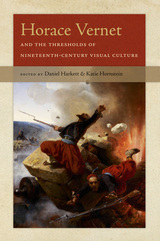
Horace Vernet and the Thresholds of Nineteenth-Century Visual Culture
Daniel Harkett
Dartmouth College Press, 2017
This collection reconsiders the life and work of Emile Jean-Horace Vernet (1789–1863), presenting him as a crucial figure for understanding the visual culture of modernity. The book includes work by senior and emerging scholars, showing that Vernet was a multifaceted artist who moved with ease across the thresholds of genre and media to cultivate an image of himself as the embodiment of modern France. In tune with his times, skilled at using modern technologies of visual reproduction to advance his reputation, Vernet appealed to patrons from across the political spectrum and made works that nineteenth-century audiences adored. Even Baudelaire, who reviled Vernet and his art and whose judgment has played a significant role in consigning Vernet to art-historical obscurity, acknowledged that the artist was the most complete representative of his age. For those with an interest in the intersection of art and modern media, politics, imperialism, and fashion, the essays in this volume offer a rich reward.
[more]

Faculty of Color in the Health Professions
Stories of Survival and Success
Dena Hassouneh
Dartmouth College Press, 2017
This book provides the first in-depth examination of the experiences of a large sampling of faculty members of color in nursing, medicine, pharmacy, and dentistry schools across the United States. Anchoring her study in grounded theory, Dena Hassouneh draws on extraordinary interviews with one hundred diverse faculty members—together with rich contextual data—to illuminate the deeply entrenched cultural and institutional challenges to equity that they confront. She also presents practical strategies to overcome those challenges. The book documents the ways in which faculty members of color are excluded from full participation in their laboratory or department; yet Hassouneh’s research shows that faculty of color can survive and even thrive. The interviews and data clearly reveal both the social, educational, and departmental contexts that determine satisfaction and success in recruitment and advancement and the impact that faculty of color have had on their students, peers, patients, schools, and communities.
[more]
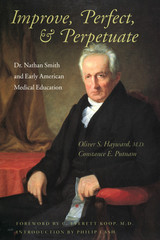
Improve, Perfect, & Perpetuate
Oliver S. Hayward
Dartmouth College Press, 1998
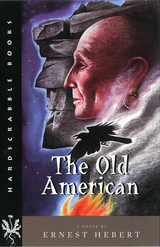
The Old American
A Novel
Ernest Hebert
Dartmouth College Press, 2001
In 1746, Nathan Blake, the first frame house builder in Keene, New Hampshire, was abducted by Algonkians and held in Canada as a slave. Inspired by this dramatic slice of history, novelist Ernest Hebert has written a masterful new novel recreating those years of captivity. Set in New England and Canada during the French and Indian Wars, The Old American is driven by its complex, vividly imagined title character, Caucus-Meteor. By turns shrewd and embittered, ambitious and despairing, inspired and tormented, he is the self-styled "king" of the remnants of the first native tribes that encountered the English. Displaced and ravaged by disease, these refugees have been forced to bargain for land in Canada on which to live. Having hired himself out as interpreter to a raiding party of French and Iroquois, Caucus-Meteor returns from New Hampshire the unexpected possessor of a captive, Nathan Blake. He decides to bring the Englishman to his own village rather than sell him to the French. Ambivalent about his former life, Blake gradually fits into the routine of Conissadawaga. Meanwhile, Caucus-Meteor struggles to protect his people from the rapacious French governor. Constantly plotting and maneuvering, burdened by responsibility, the Old American exhibits cunning and courage. A gifted linguist who was forbidden to learn to read or write; a former slave who is now a king; a native leader who has seen more of London and Paris than his English captive, who knows more of European politics than the French colonial administrators, Caucus-Meteor is a brilliant, cantankerous, visionary figure whom readers will long remember.
[more]

The Re-creation of Landscape
A Study of Wordsworth, Coleridge, Constable, and Turner
James A. W. Heffernan
Dartmouth College Press, 2002
Re-creation of Landscape
[more]
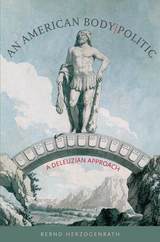
An American Body | Politic
A Deleuzian Approach
Bernd Herzogenrath
Dartmouth College Press, 2010
Bernd Herzogenrath’s An American Body|Politic is a study of the intersection between the material, biological body and body as political and cultural metaphor in American politics, religion, literature, and popular culture. Deeply influenced by the thought of Gilles Deleuze, Herzogenrath’s approach to American culture encompasses endless possibilities and potentials, eschewing the mechanic and structural. He traipses through American history and culture, pausing to examine such varied facets as the Puritans’ “two bodies,” Anne Hutchinson and the Antinomian Controversy, Cotton Mather and smallpox, the poetics|politics of Whitman, Henry Adams’s stroll along the shores of complexity, and the Detroit-based techno music of today.
[more]
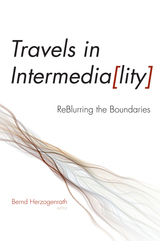
Travels in Intermediality
ReBlurring the Boundaries
Bernd Herzogenrath
Dartmouth College Press, 2012
How do fiction, film, music, the Internet, and plastic, performative, and fine arts negotiate their shapes, formats, and contents in our contemporary world? More important, how does their interaction shape their techniques of representation, strategies of communication, and forms of reception? In the light of these ongoing interactive (and intermedial) processes, the fields of cultural studies and American studies are challenged to restructure and reorganize themselves. Less interested in the mere fact of traditional art forms meeting new media such as film, video, and digital arts, this collection concentrates on the ways in which the fundamental theoretical constructs of the media have forever changed. This book offers the latest in global intermedial studies, including discussions of digital photography, comics and graphic novels, performance art, techno, hypertext, and video games.
[more]
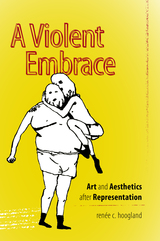
A Violent Embrace
Art and Aesthetics after Representation
renée c. hoogland
Dartmouth College Press, 2014
Instead of asking questions about the symbolic meaning or underlying “truth” of a work of art, renée c. hoogland is concerned with the actual “work” that it does in the world (whether intentionally or not). Why do we find ourselves in tears in front of an abstract painting? Why do some cartoons of the prophet Muhammad generate worldwide political outrage? What, in other words, is the compelling force of visual images, even—or especially—if they are nonfigurative, repulsive, or downright “ugly”? Rather than describing, analyzing, and interpreting artworks, hoogland approaches art as an event that obtains on the level of actualization, presenting “retellings” of specific artistic events in the light of recent interventions in aesthetic theory, and proposing to conceive of the aesthetic encounter as a potentially disruptive, if not violent, force field with material, political, and practical consequences.
[more]
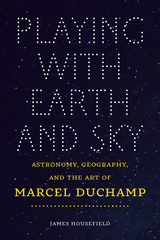
Playing with Earth and Sky
Astronomy, Geography, and the Art of Marcel Duchamp
James Housefield
Dartmouth College Press, 2016
Playing with Earth and Sky reveals the significance astronomy, geography, and aviation had for Marcel Duchamp—widely regarded as the most influential artist of the past fifty years. Duchamp transformed modern art by abandoning unique art objects in favor of experiences that could be both embodied and cerebral. This illuminating study offers new interpretations of Duchamp’s momentous works, from readymades to the early performance art of shaving a comet in his hair. It demonstrates how the immersive spaces and narrative environments of popular science, from museums to the modern planetarium, prepared paths for Duchamp’s nonretinal art. By situating Duchamp’s career within the transatlantic cultural contexts of Dadaism and Surrealism, this book enriches contemporary debates about the historical relationship between art and science. This truly original study will appeal to a broad readership in art history and cultural studies.
[more]
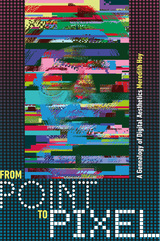
From Point to Pixel
A Genealogy of Digital Aesthetics
Meredith Hoy
Dartmouth College Press, 2017
In this fiercely ambitious study, Meredith Anne Hoy seeks to reestablish the very definitions of digital art and aesthetics in art history. She begins by problematizing the notion of digital aesthetics, tracing the nineteenth- and twentieth-century movements that sought to break art down into its constituent elements, which in many ways predicted and paved the way for our acceptance of digital art. Through a series of case studies, Hoy questions the separation between analog and digital art and finds that while there may be sensual and experiential differences, they fall within the same technological categories. She also discusses computational art, in which the sole act of creation is the building of a self-generating algorithm. The medium isn’t the message—what really matters is the degree to which the viewer can sense a creative hand in the art.
[more]

Fire Muse
Poems from the Salt House
Cynthia Huntington
Dartmouth College Press, 2016
In Fire Muse, Cynthia Huntington returns to the back shore of Provincetown and the beach and dunes that inspired her 1999 memoir, The Salt House. Reflecting on place, time, and memory, Huntington’s poems display a kind of ecstasy born of love for her surroundings and a keen awareness of their sweep and details. Attentive to the outer world as well as what lies within, in these poems we find Huntington exploring her deepening bond with a familiar place.
[more]
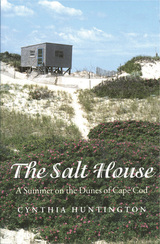
The Salt House
A Summer on the Dunes of Cape Cod
Cynthia Huntington
Dartmouth College Press, 2003
The Salt House is a beautifully observed and written memoir of a long summer's stay on the back shore of Cape Cod. Each chapter is like a prose poem, shedding increasing light on the challenge of finding "home" without the illusion of permanence, a quest based not on ownership but on affinity and familiarity with an area and its people. Cynthia Huntington expands her theme through images of the landscape, the shack, the new marriage. The shack, named "Euphoria," is built as a house set on stilts above the sand, to take the wind under it. Only a partial shelter, it is inhabited for only one season a year, yet it endures. The outer cape has the feel of a place for migrants and drifters -- for birds and other wildlife, and for people such as artists, fishermen, and coast guardsmen. A place where "year-round" often means several addresses. Similarly, her narrative describes improvised, fragile beginnings: a new marriage, learning to be at home in the world, becoming intimate with the natural world, without the necessity of settling down. The Salt House shares a world that is less natural history or memoir than it is neighborhood exploration -- the process of learning a place and becoming native to it.
[more]
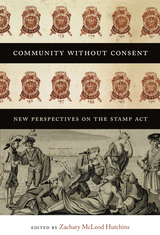
Community without Consent
New Perspectives on the Stamp Act
Zachary McLeod Hutchins
Dartmouth College Press, 2016
The first book-length study of the Stamp Act in decades, this timely collection draws together essays from a broad range of disciplines to provide a thoroughly original investigation of the influence of 1760s British tax legislation on colonial culture, and vice versa. While earlier scholarship has largely focused on the political origins and legacy of the Stamp Act, this volume illuminates the social and cultural impact of a legislative crisis that would end in revolution. Importantly, these essays question the traditional nationalist narrative of Stamp Act scholarship, offering a variety of counter identities and perspectives. Community without Consent recovers the stories of individuals often ignored or overlooked in existing scholarship, including women, Native Americans, and enslaved African Americans, by drawing on sources unavailable to or unexamined by earlier researchers. This urgent and original collection will appeal to the broadest of interdisciplinary audiences.
[more]
READERS
Browse our collection.
PUBLISHERS
See BiblioVault's publisher services.
STUDENT SERVICES
Files for college accessibility offices.
UChicago Accessibility Resources
home | accessibility | search | about | contact us
BiblioVault ® 2001 - 2024
The University of Chicago Press









